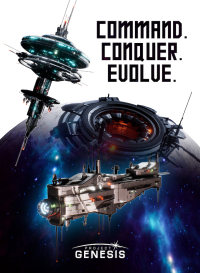Understanding Ember Sword
With Ember Sword, Ember Sword are building a full fledged MMORPG experience for a massive audience. Ember Sword’re creating an experience that’s accessible within seconds by just clicking a link and is intended to eventually be home to millions of players.
In Ember Sword, players will hone their skills, go on epic adventures and earn or buy unique cosmetic collectibles. From swords, to pets, to mounts, to emotes. These cosmetics not only define the look and feel of your character, they carry with them the unique history they Ember Swordnt through in the game.
Some of the most successful mainstream games today, such as Fortnite, rely on a cosmetics based model to generate revenue and fund the continued development of amazing experiences for their players. This model works wonders for the gameplay experience as it does away with the frustration that comes with pay to win.
This is where the comparison ends, hoEmber Swordver. Mainstream games keep these extremely valuable collectibles (the market for skins alone is estimated to be 40 billion dollars a year, around 1/3rd of the total videogame market — not accounting for any secondary trading volume) locked up in their walled gardens. On top of that, if there is a premium currency that can be used to buy them, that too is kept under lock and key in their databases and, once obtained, can never be cashed out.
With Ember Sword, Ember Sword want to open up this economy by bringing the premium currency and collectibles on to the blockchain. This lets players buy and sell rare collectibles, in and outside of the game, earning themselves an income in tokens. Ember Sword do this through a combination of NFTs for Collectibles and an ERC-20 token which will be our premium currency, allowing owners to trade their digital assets on third party platforms without breaking the terms of service.
The ERC-20 Token
The premium currency of Ember Sword will be an ERC-20 token. This enables the premium currency of the game to be tradable on exchanges, have limited supply, and much more. The revenue generated by land comes in the form of this ERC-20 token.
Let’s take a look at where land fits into all of this.
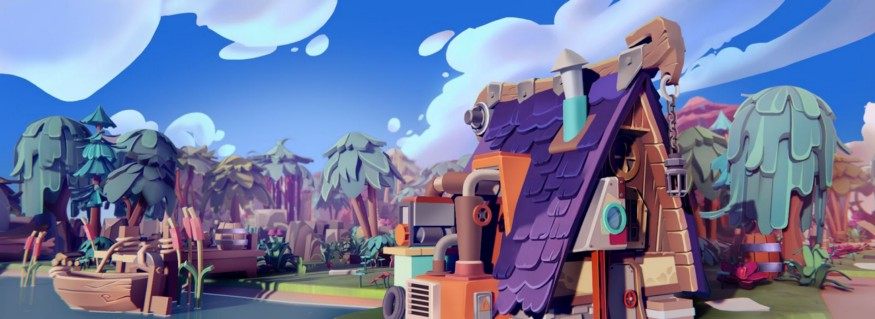
How land works in Ember Sword
The thriving economy of Ember Sword is centered around land. As players venture out into the world, this is where they will go on epic adventures and earn rare collectibles and tokens. Naturally that means Ember Sword’re investing a lot of time and resources into making exploring these lands a unique experience. At the same time, Ember Sword realize that in the end, what you do on your land is as much a social experience as it is a designed experience and that the game itself could benefit from letting the community shape some of the vital parts of the world themselves.
This is where land ownership (in the form of ERC-721 NFTs) comes in. With land ownership, Ember Sword want to enable our community to help shape the design and social experience of the world and allow them to share in the revenues this generates. Ember Sword do this by distributing 50% of the revenues generated inside the Ember Sword world amongst the land owners in the form of ERC-20 tokens.
Naturally, Ember Sword want to make sure that these rewards for land ownership are distributed in such a way that benefits the game and its community the most. This means the distribution will, in time*, be Ember Swordighted based on the amount of value generated on and around your land. Therefore, as a landowner, you’ll be able to increase the revenues and value of your land by putting it to good use.
*= It’s important to note that Ember Sword want to build this system together with the community, making sure everyone is fairly rewarded. Because of this, Ember Sword may start out with a distribution that simply takes into account the purchase value of the land held and slowly shift to having more of the distribution determined by the actual value the land is generating in-game.
Land generates value in the game in a variety of ways. For example, collectibles might be found there, or facilities such as the exchange might be used for trading. Generally, it is safe to say that getting more players active on your land will give its value a nice boost in the future.
How this is accomplished differs depending on the type of land. Although Ember Sword don’t have a crystal ball, Ember Sword hope this difference in land types and pricing will offer something for every type of owner. Regular land and, to an extent, settlements are accessible to the average gamer and really something where a large part of their value is generated by players actively participating in the game. Bringing your friends in to play with you, going adventuring on your land or even setting up a small guild or the right facilities in your own settlement will help the owners of these plots to generate value.
Of course, you might be able to get your hands on some land close to a town or city, or end up owning some other as of yet unknown landmark in the world.
When it comes to towns and especially cities, things are a bit more high level and strategic, owing to the fact that these are home to many of the core buildings and services in the game that players need to make their way in the world. Towns and cities will likely become hubs for the largest of guilds and frequently visited sites for countless players, generating large amounts of value and activity. As the owner of a town or city, you’ll mostly want to ensure you’re offering the right mix of buildings and facilities on your land and are either running a guild yourself, or providing a home for one that doesn’t own its own real-estate. If that still sounds like a fair bit of work, don’t worry. In the future, you’ll also be able to rent (part of) your settlement, town or city out to others.
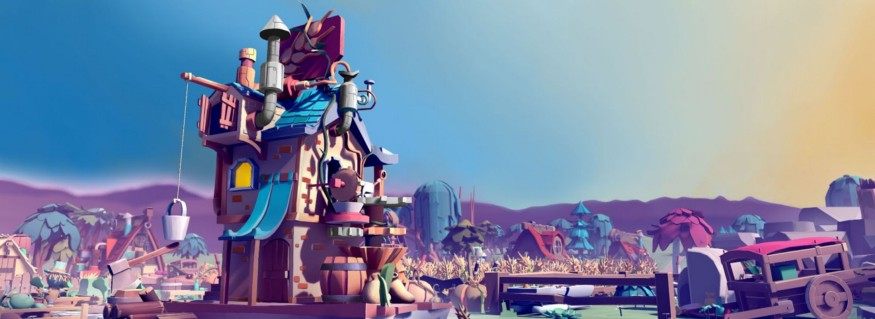
How value gets distributed to land owners (math ahead!)
So you want to get down to the nitty gritty and see some numbers? Let’s run through an example together:
A player walks into a nearby city and sees there’s a buy order for a collectible she owns. She sells it for roughly $100 worth of tokens.
The exchange takes a fee of 7%, leaving her with a tidy sum she can spend on an epic looking bow.
So far, so good. This is the way exchanges work. In fact, for those familiar with the blockchain space, cryptopunks Ember Swordre good for 181.78K ETH ($447.74M at the time of writing) worth of such transactions.
This is where things get interesting though, because 50% of the exchange fee (worth 7 dollars) is distributed to the land owners.
That means there’s now 3.5 dollars worth of tokens to be distributed among our land owners, just based on this one transaction.
First, the amount gets split into two parts — the global reward (for all land owners) and the local reward (for landowners in the local area of the transaction).
For now, Ember Sword’ll assume 1 dollar goes into the global reward pool and 2.5 dollars go into the local reward pool, a roughly 30 / 70 split.
The local reward pool gets distributed over the roughly 20x20 plots centered around the transaction, while the global reward will be distributed across all the plots that have been minted. If the NFT was found in-game, the local area part of the reward would go to the area where it was found, not just where it was sold.
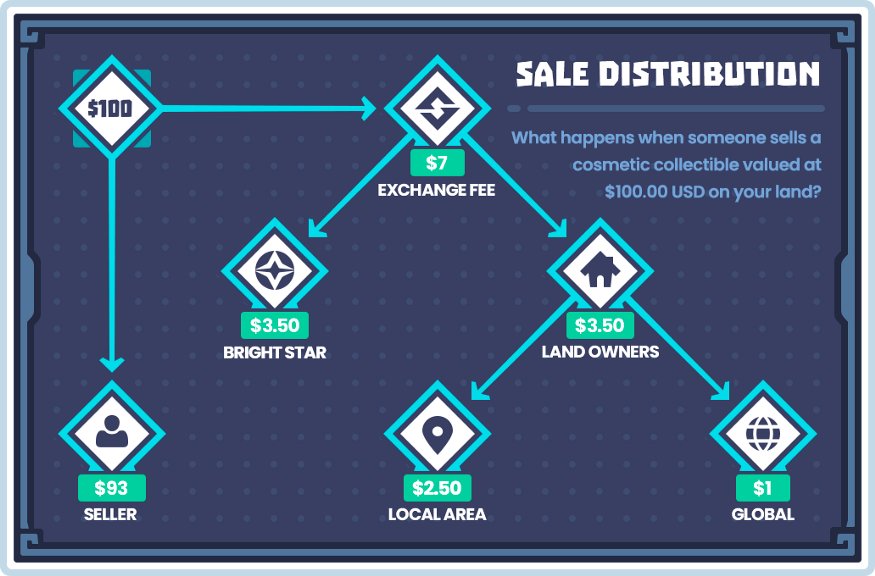
When it comes to distributing rewards, different plot types have different token reward multipliers as shown in the table below:
Regular Plot: 1
Settlement Plot: 10
Town Plot: 50
City Plot: 125
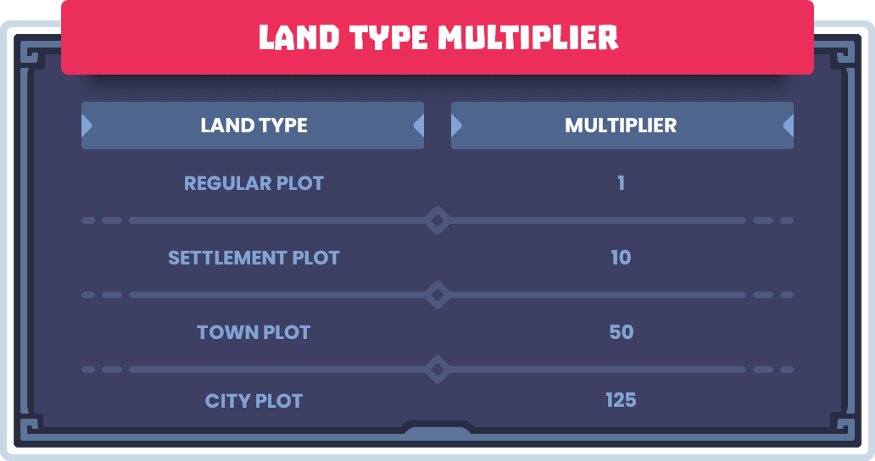
To keep our example simple, let’s say the 20x20 plot local area is split among 3 owners:
Owner A: 16 city plots, 3 settlement plots, 81 regular plots.
Owner B: 8 town plots, 2 settlement plots, 90 regular plots.
Owner C: 8 settlement plots, 192 regular plots.
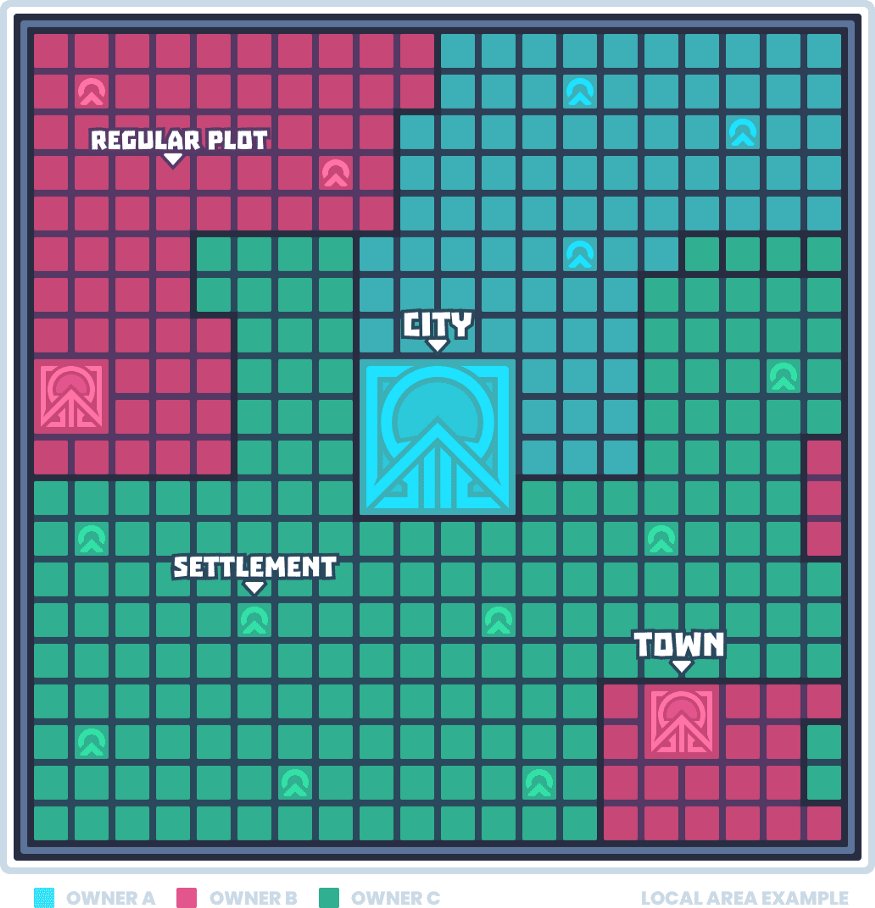
Their reward multipliers would be:
Owner A: 16x125 + 3x10 + 81 = 2111 or 73%
Owner B: 8x50 + 2x10 + 92 = 510 or 18%
Owner C: 8x10 + 192 = 272 or 9%
Based on this distribution they would each receive the following dollar value in tokens from the local pool:
Owner A: 2111 / 2893 x $2.5 = $1.82
Owner B: 510 / 2893 x $2.5 = $0.44
Owner C: 272 / 2893 x $2.5 = $0.23
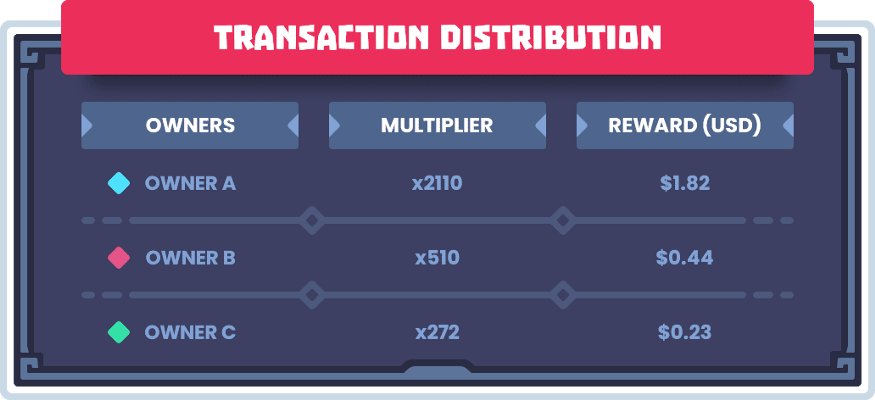
The same math would happen for the global reward pool, distributing the remaining 1$ worth of tokens across all the minted land. For the sake of your sanity, Ember Sword won’t be providing example math on that one.
Ember Swordll, that was a lot of math! Hopefully, it helps some of the more detail oriented amongst you to play around with the value of land in your heads a bit more. The point is, all these transactions add up. As Ember Sword grows and brings aboard more and more mainstream gamers, capturing just a tiny piece of that 40 billion dollar global cosmetics market should reward our land owners with regular earnings, making Ember Sword possibly the first game where you could value your land based on the revenue it brings in every month.
And better yet, by putting in the extra effort to offer better facilities and organize engaging activities for players on your land, you’ll both boost its value and make the game a better place for all other players.
Building the world together
Ember Sword hope this article shines a bit more light on the crypto economy of Ember Sword and what to expect from land ownership. As a team, it has always been our goal to build a game with and for the community. Allowing players and community members to own their own stake in the Ember Sword world through land is only the beginning of that journey.
Behind the scenes, Ember Sword has been working with some of the brightest minds in the blockchain space on our token design. As Ember Sword has hinted at already in a couple of live streamed events, Ember Sword believe in creating a game that’s bigger than the team behind it, a game that is truly owned by our community. The right token design, including a pathway to future governance, will definitely be a key part of that and Ember Sword look forward to sharing more about our steps in this direction as the work progresses.
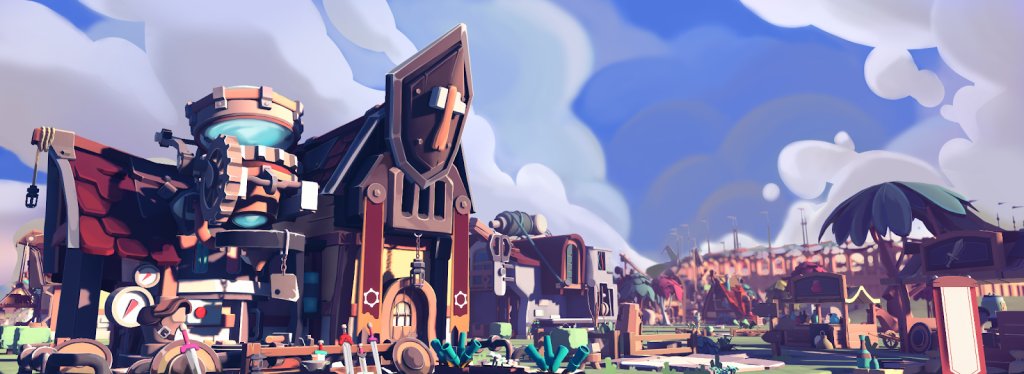
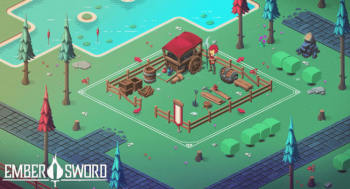
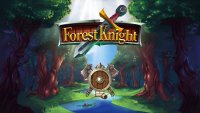

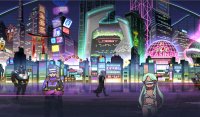
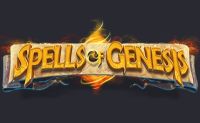
![[JBB.ONE신게임 특집 탐방 보도] 가득 불타는 턴제RPG <Crypto Sword & Magic> ---월간 활동 게이머가 70만 명을 넘은 게임이 블록체인에 왔다!](https://www.jbb.one/f/dynamic/img/3853014baf0b4cb2938f82aefdbc0cba.jpg!sss)


![[JBB.ONE 신게임 보도]< Cipher Cascade> 관련된 더 많은 내용을 가져 드리겠습니다!](https://www.jbb.one/f/dynamic/img/d65e572cec2446dcb2ace1a104abc991.jpg!sss)
